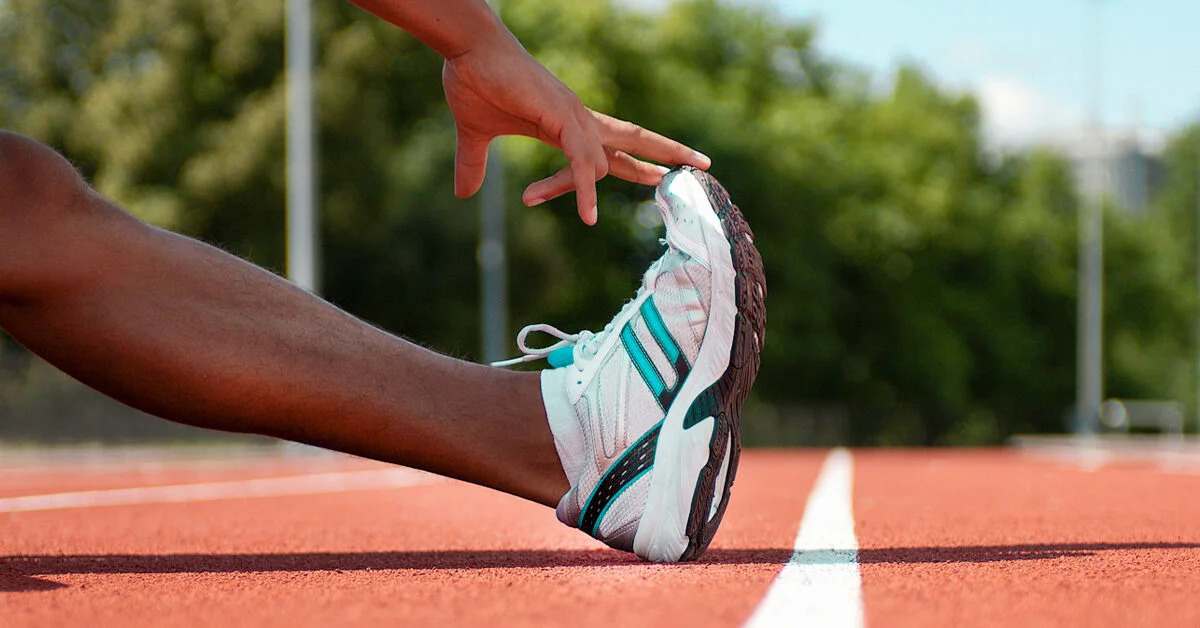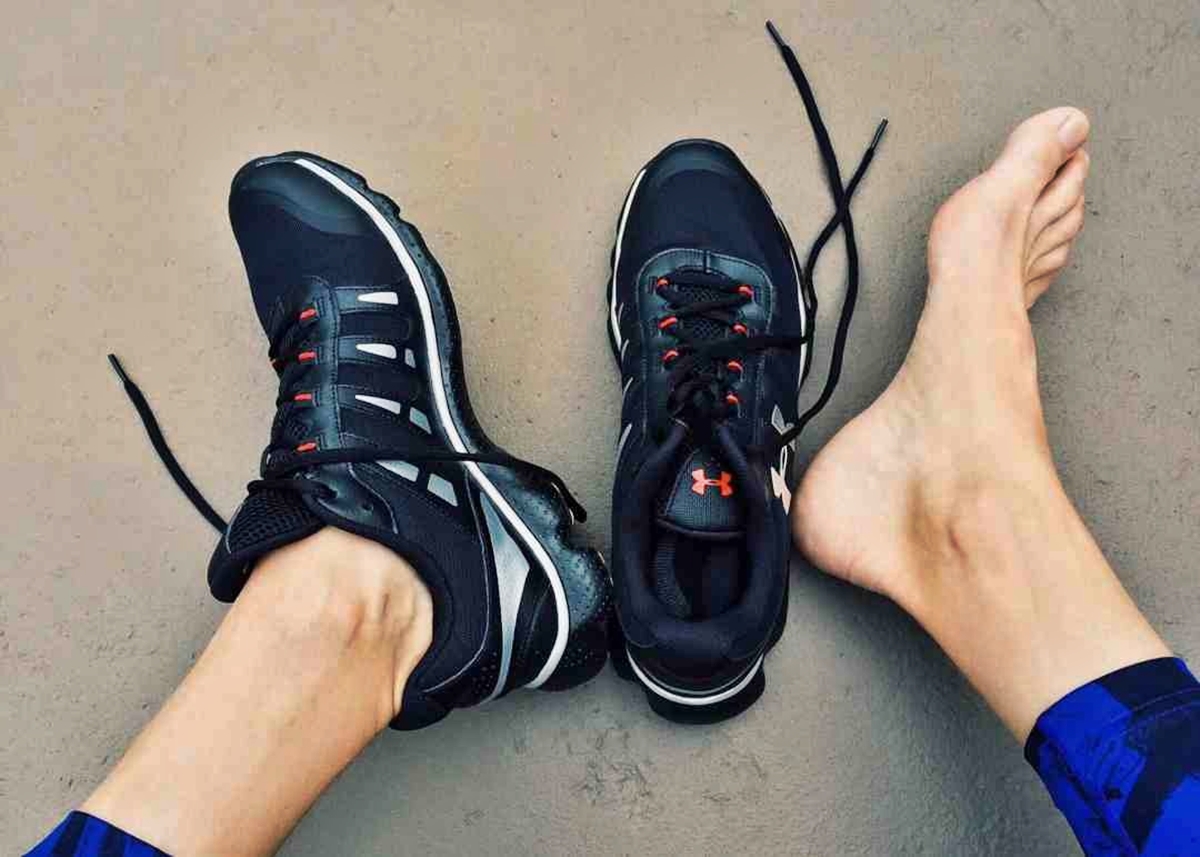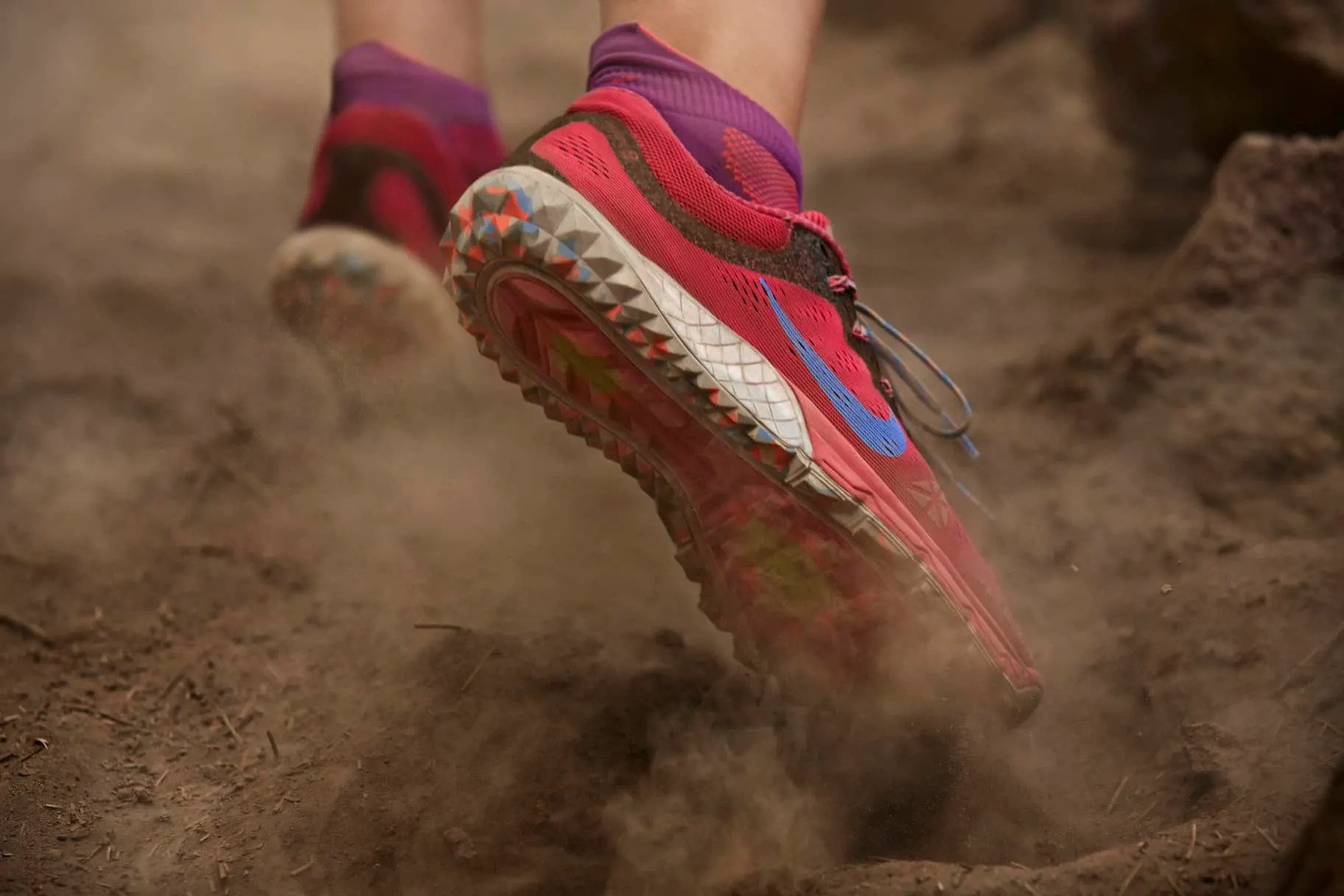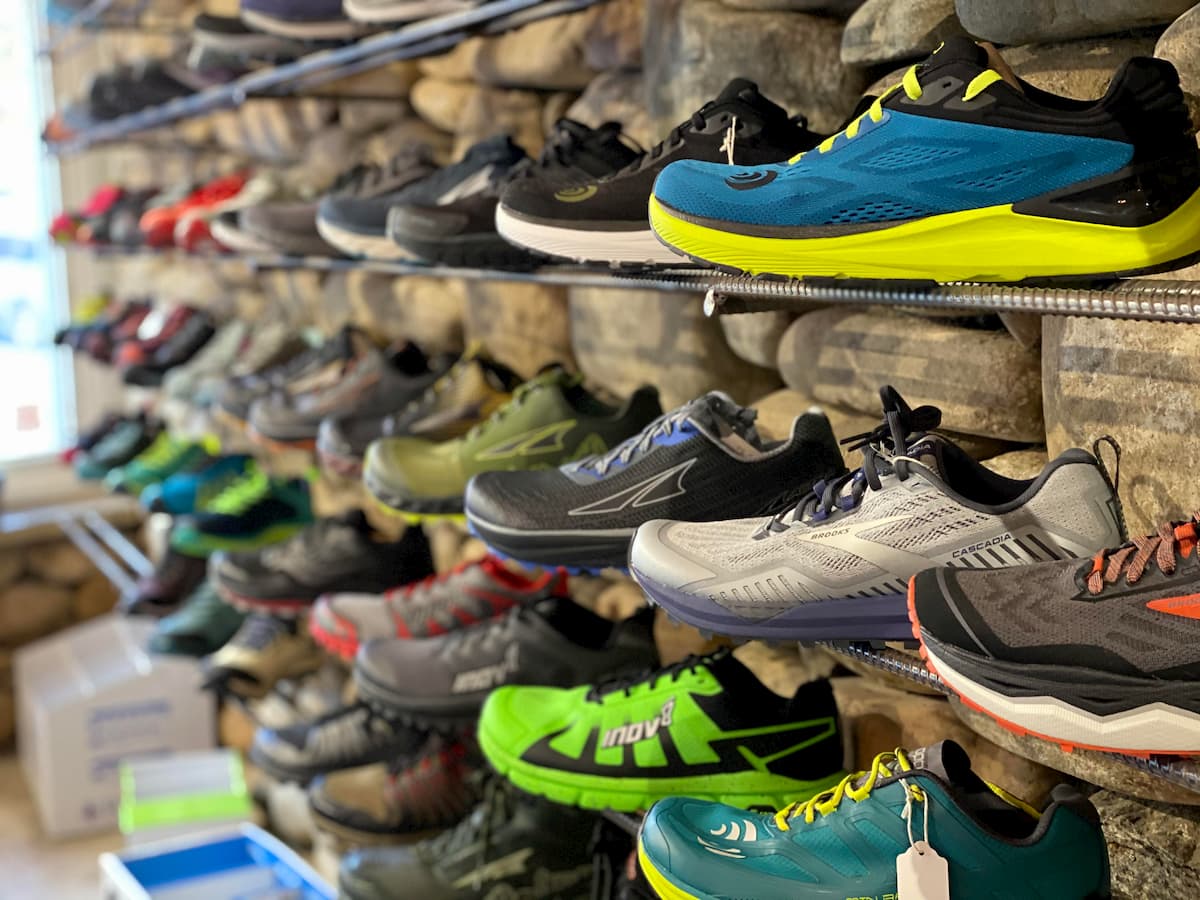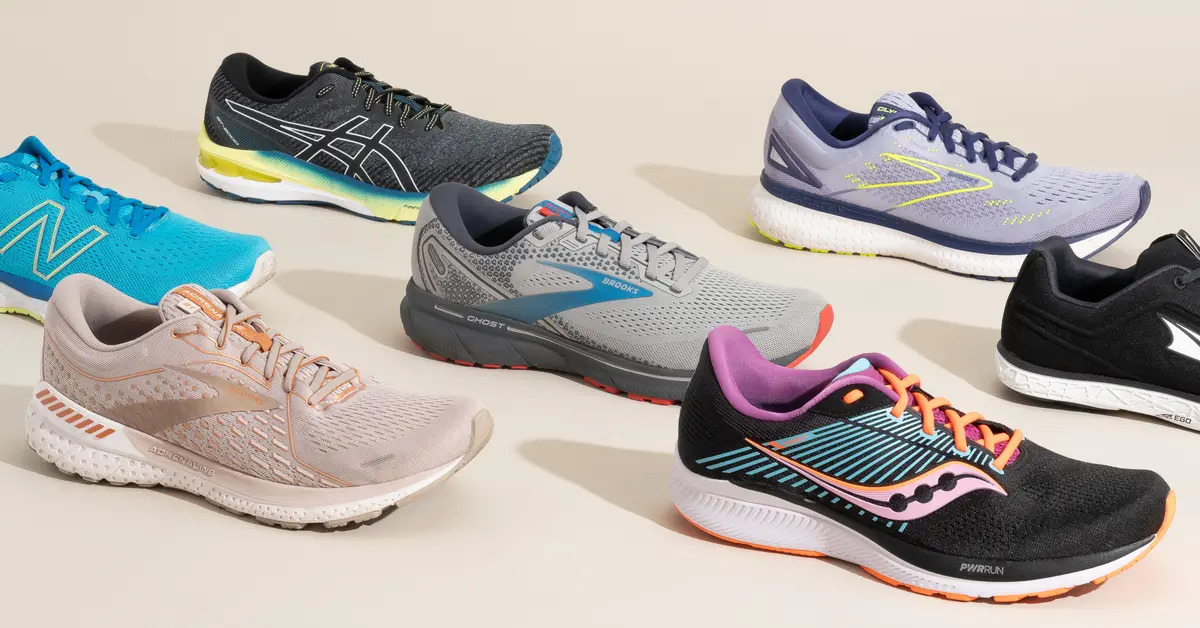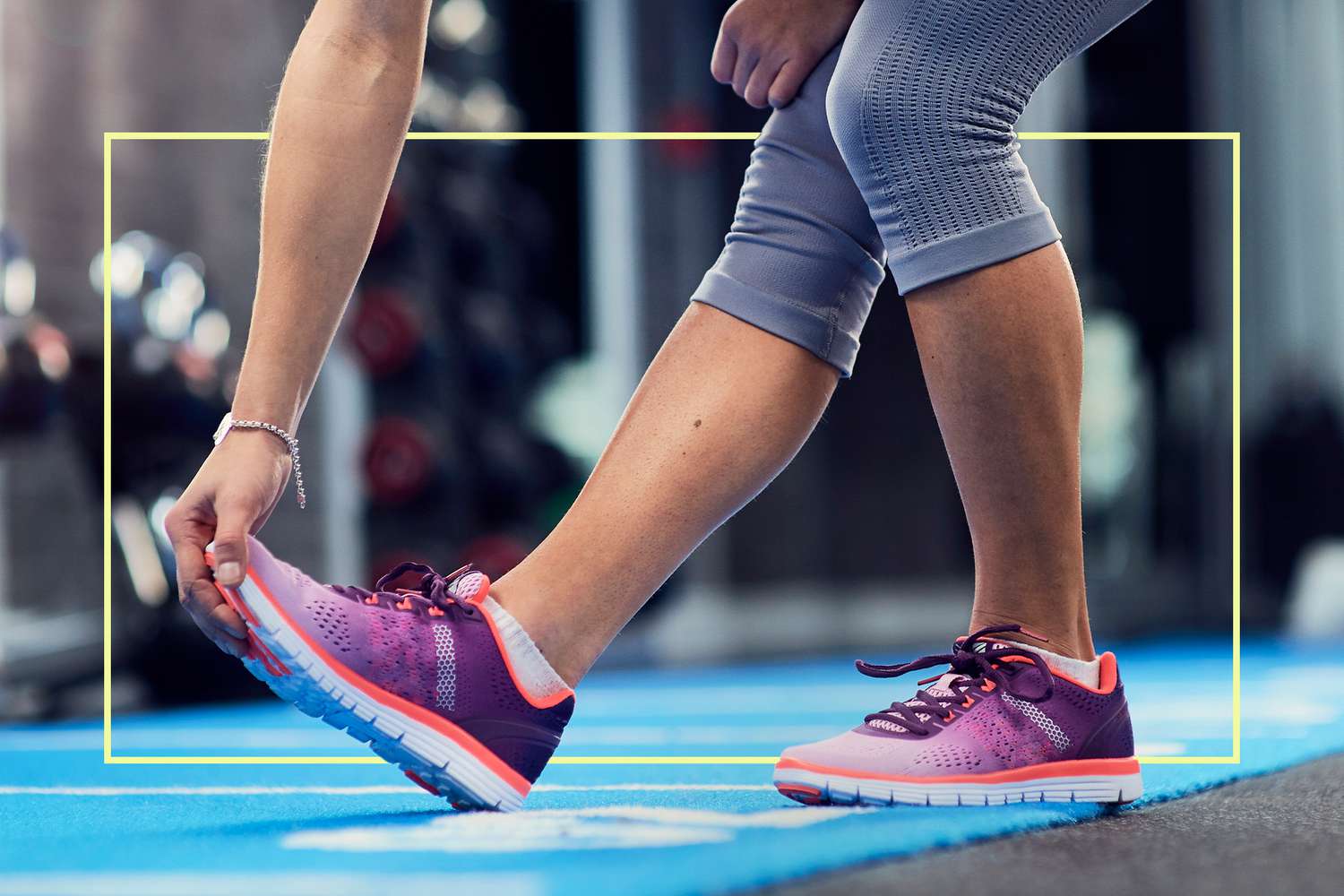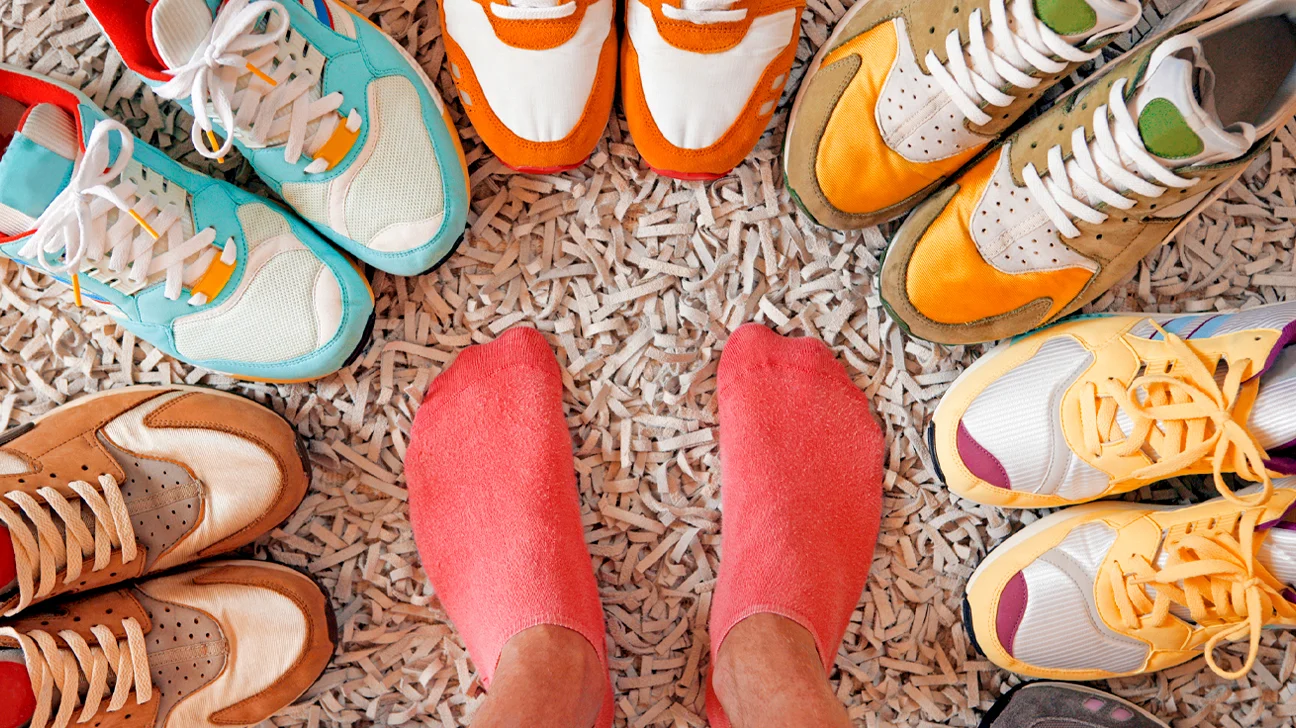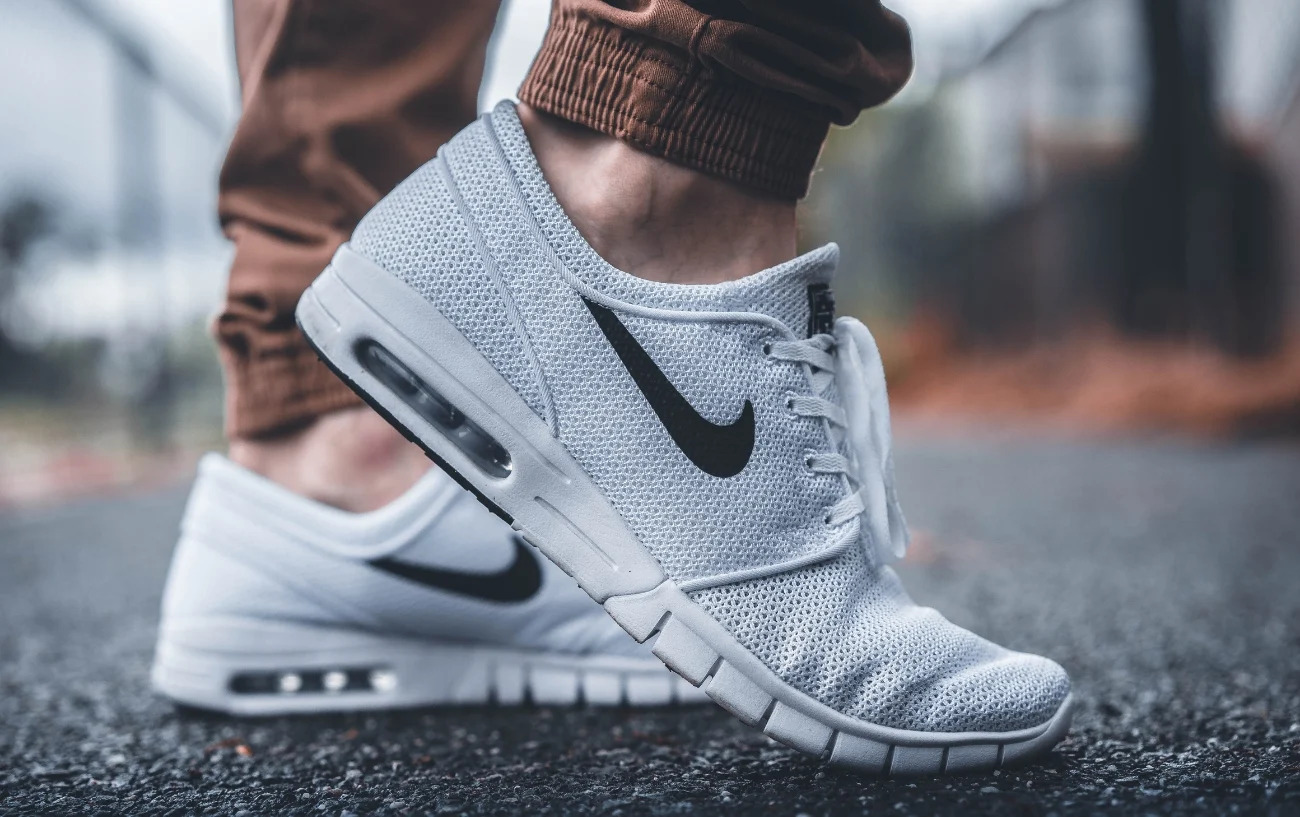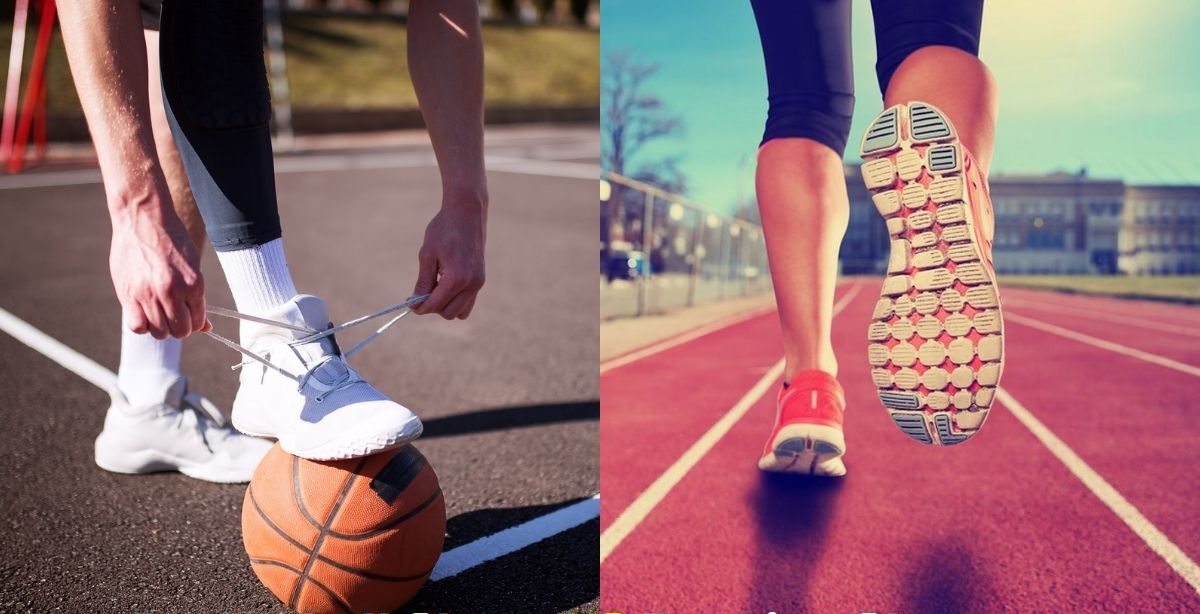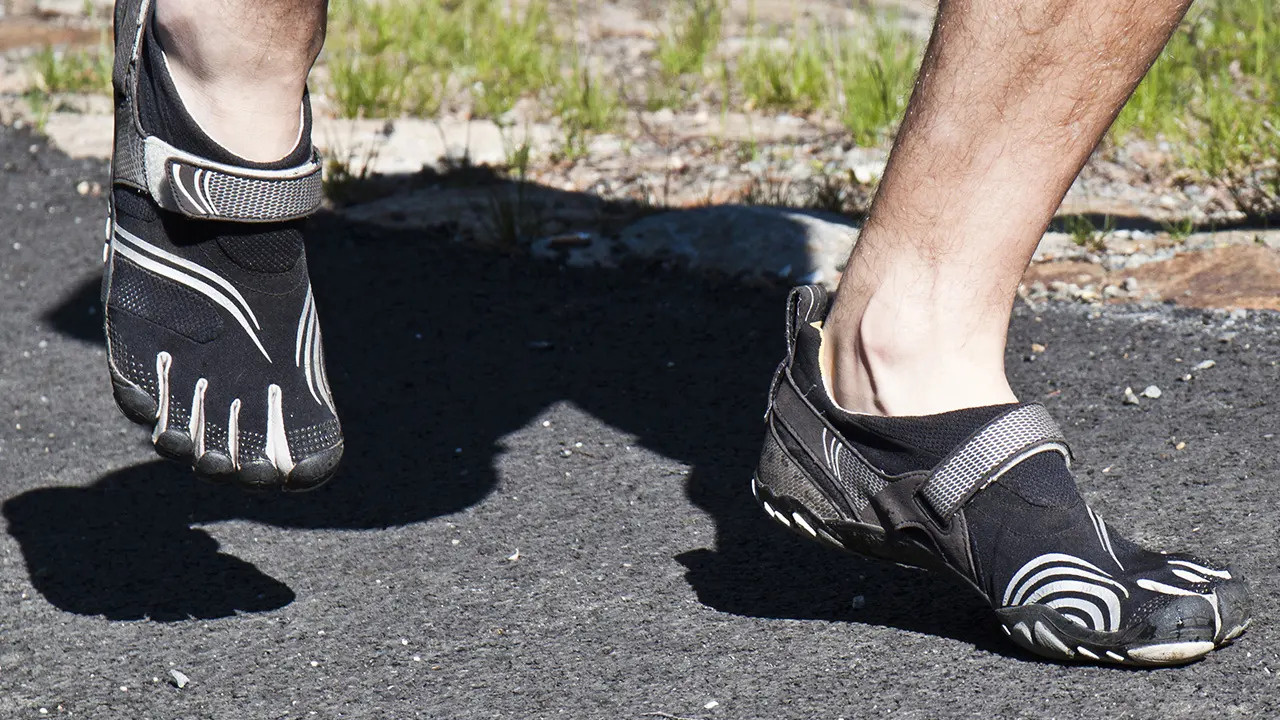

Featured
What Is Barefoot Running Shoes
Modified: August 21, 2023
Discover the benefits of barefoot running shoes and find out why they are featured as the top choice for runners seeking a natural, minimalist experience.
Introduction
Barefoot running has gained popularity in recent years as many people seek to improve their running performance and reduce the risk of injury. One of the key components of barefoot running is using barefoot running shoes, which are designed to mimic the experience of running barefoot while still offering some protection and support.
Barefoot running shoes are lightweight and flexible, allowing for natural foot movement and a more minimalist running experience. They are designed to provide a closer connection to the ground, promoting better running form and proprioception. By encouraging a midfoot or forefoot strike, they aim to reduce the impact on joints and muscles that is often associated with heel striking in traditional running shoes.
Although barefoot running shoes may not be suitable for everyone, they can be a valuable tool for those looking to improve their running technique and strengthen their feet and lower legs. This article delves into the various benefits and drawbacks of barefoot running shoes, as well as offers tips for choosing the right pair and transitioning to barefoot running.
Definition of Barefoot Running Shoes
Barefoot running shoes, also known as minimalist running shoes, are a type of footwear designed to replicate the feeling of running barefoot while providing some level of protection and support. These shoes feature a thin and flexible sole, allowing for greater sensory feedback and natural foot movement.
Unlike traditional running shoes, which often have thick cushioning and heel support, barefoot running shoes have a minimalist construction. The primary purpose of these shoes is to promote a more natural running form by encouraging a midfoot or forefoot strike, as opposed to a heel strike.
The thin sole of barefoot running shoes allows the foot to flex and move more freely, promoting a more efficient and biomechanically optimal running gait. The lack of excessive cushioning also enhances proprioception, which is the body’s ability to sense its position and movement in space.
Barefoot running shoes typically have a wide toe box, allowing the toes to splay and engage the ground, which can contribute to better balance and stability. They are also designed to be lightweight, reducing the overall weight burden on the feet and legs during running.
While barefoot running shoes aim to provide a more natural running experience, it is important to note that they are not the same as running barefoot. They offer a minimal level of protection against rough or uneven surfaces, such as rocks, glass, or sharp objects, but still allow for the benefits of barefoot-like movement and ground contact.
Overall, barefoot running shoes offer a balance between protection and natural movement, helping runners develop better running mechanics and potentially reducing the risk of certain running-related injuries.
Benefits of Barefoot Running Shoes
Barefoot running shoes offer several benefits that can enhance your running experience and overall foot health. Here are some of the key advantages:
- Natural Running Form: Barefoot running shoes encourage a more natural running gait by promoting a midfoot or forefoot strike. This can help improve your running form and reduce the impact on your joints and muscles.
- Increased Sensory Feedback: The thin and flexible sole of barefoot running shoes allows for greater sensory feedback from the ground. This enhances your proprioception, helping you make instant adjustments to your running technique and maintain better balance.
- Stronger Foot and Lower Leg Muscles: By providing less cushioning and support, barefoot running shoes can strengthen the muscles in your feet and lower legs. This can improve your overall foot stability and reduce the risk of common running injuries, such as shin splints and Achilles tendonitis.
- Improved Foot Strike: Traditional running shoes often encourage a heel strike, which can increase the force on your joints and lead to repetitive stress injuries. Barefoot running shoes promote a midfoot or forefoot strike, which can help distribute the impact more evenly and reduce the risk of injury.
- Enhanced Running Efficiency: Barefoot running shoes allow for a more natural foot motion, eliminating unnecessary foot pronation or supination. This can result in a more efficient running stride, helping you conserve energy and maintain a steady pace.
It is important to note that while barefoot running shoes offer these benefits, they may not be suitable for everyone. It is recommended to gradually transition to barefoot running shoes to allow your feet and muscles to adapt to the new running mechanics. Consulting with a running coach or podiatrist can provide personalized guidance on incorporating barefoot running shoes into your training regimen.
Drawbacks of Barefoot Running Shoes
While barefoot running shoes have their benefits, it is important to also consider the potential drawbacks and limitations. Here are some of the main drawbacks to keep in mind:
- Risk of Overuse Injuries: Some runners may experience an increased risk of certain overuse injuries when transitioning to barefoot running shoes. This is because the lower cushioning and support can put more stress on the feet and lower legs, especially if the transition is done too quickly or without proper guidance.
- Less Protection: Barefoot running shoes provide minimal protection compared to traditional running shoes. This means they may not be suitable for running on rough or uneven surfaces, as they offer less cushioning and impact absorption. There is also a higher risk of injury from sharp objects or debris on the ground.
- Potential for Foot Soreness: Initially, wearing barefoot running shoes may lead to muscle soreness in the feet and lower legs as the muscles adapt to the new running mechanics. It is important to gradually increase your mileage and listen to your body to avoid overexertion.
- Reduced Arch Support: Barefoot running shoes typically have minimal arch support compared to traditional running shoes. This can be a drawback for individuals with specific foot conditions or high arches that require additional support for optimal comfort and stability.
- Adjustment Period: Transitioning to barefoot running shoes requires an adjustment period for your muscles and tendons to adapt to the new running mechanics. This can take time, and during this period, you may experience discomfort or frustration as your body adjusts to the changes.
It is important to consider these drawbacks and assess whether barefoot running shoes are suitable for your individual needs and running goals. If you have any concerns or pre-existing foot conditions, consulting with a healthcare professional or podiatrist can provide valuable guidance and help you make an informed decision.
Factors to Consider When Choosing Barefoot Running Shoes
When selecting barefoot running shoes, several factors should be taken into consideration to ensure the right fit and performance. Here are some key factors to consider:
- Fit and Size: Proper fit is crucial for any running shoe, including barefoot running shoes. Look for shoes that provide a snug fit without being too tight or constricting. Consider a shoe that allows your toes to splay naturally and has enough room in the toe box.
- Flexibility: Barefoot running shoes should be highly flexible, allowing for natural foot movement. Check the sole’s flexibility by bending and twisting it. It should be supple and responsive to your foot’s movements.
- Support and Cushioning: While barefoot running shoes offer minimal support and cushioning, they should still provide some level of protection and shock absorption. The sole should be thick enough to provide a barrier against rough surfaces, but thin enough to maintain ground-feel.
- Weight: Barefoot running shoes should be lightweight to minimize the weight burden on your feet. This can help improve your running efficiency and reduce fatigue during long-distance runs.
- Traction: Consider the outsole design and its traction capabilities. The shoe should have a tread pattern that offers good grip on various surfaces, including asphalt, trails, and wet conditions.
- Transition Considerations: If you are transitioning from traditional running shoes to barefoot running shoes, it is advisable to start with a more transitional model. These shoes have slightly more cushioning and support to ease the transition and allow your feet to adapt gradually.
- Price: Barefoot running shoes come in a range of prices. Set a budget and consider the durability and quality of the shoe before making a purchase. Keep in mind that investing in a high-quality pair may offer better long-term value.
It is important to try on different brands and models and take them for a test run to see how they feel on your feet. Remember that everyone’s feet are different, so what works for others may not work for you. Don’t be afraid to seek guidance from professionals at specialty running stores to get personalized recommendations based on your specific needs and running goals.
Tips for Transitioning to Barefoot Running Shoes
Transitioning to barefoot running shoes requires a gradual approach to allow your feet and muscles to adapt to the new running mechanics. Here are some tips to help you ease into barefoot running:
- Start Slowly: Begin by incorporating short distances of barefoot running into your regular running routine. This will allow your body to adjust to the new movement patterns and build strength gradually.
- Listen to Your Body: Pay close attention to any discomfort or pain during the transition. It is normal to experience some muscle soreness, but if you experience sharp or persistent pain, it’s a sign to slow down or take a break.
- Strengthen Your Feet and Lower Legs: Alongside barefoot running, incorporate exercises that specifically target the muscles in your feet and lower legs. This can help strengthen these areas and improve stability and balance.
- Focus on Proper Technique: Concentrate on your running form, with an emphasis on a midfoot or forefoot strike. Aim to land with a light and quiet footfall, allowing your feet to absorb the impact gradually.
- Gradually Increase Mileage: As your feet and muscles adapt, gradually increase the mileage of your barefoot running sessions. Add a quarter or half mile at a time, allowing your body to acclimate to the added distance.
- Vary Your Surfaces: Run on a variety of surfaces to challenge your feet and develop different skills. Start with smooth and softer surfaces, such as grass or dirt, before progressing to more challenging terrains like gravel or trails.
- Consider Transition Shoes: If you find the transition to barefoot running shoes too challenging, you can try using transitional shoes that provide a bit more cushioning and support. These shoes strike a balance between traditional running shoes and barefoot running shoes.
- Patience and Persistence: Transitioning to barefoot running shoes takes time and patience. Be consistent with your training, but also be prepared to take breaks or decrease mileage if needed. It’s better to progress slowly than risk injury.
Remember, the journey to barefoot running is individual, and it’s important to experiment and find what works best for you. Gradually adapting to barefoot running shoes can help reduce the risk of injury and allow you to fully experience the benefits they offer. If you have any concerns or questions, consult with a running coach or healthcare professional for personalized advice.
Frequently Asked Questions about Barefoot Running Shoes
Here are some commonly asked questions about barefoot running shoes:
- Are barefoot running shoes suitable for everyone? Barefoot running shoes may not be suitable for everyone. Individuals with pre-existing foot conditions or injuries should consult with a healthcare professional before transitioning to barefoot running shoes.
- How do I know if my barefoot running shoes fit properly? Proper fit is important for barefoot running shoes. They should fit snugly without being too tight. Ensure that your toes can move and splay naturally within the shoe and that there is enough room in the toe box.
- Can I use barefoot running shoes for other activities besides running? Yes, barefoot running shoes can be used for various activities like walking, hiking, and fitness training. They provide a more natural and minimalist experience that can benefit these activities as well.
- How long does it take to transition to barefoot running shoes? The transition period varies for each individual. It can take several weeks to several months to fully adapt to barefoot running shoes. Listen to your body and progress at a pace that feels comfortable for you.
- Can I wear socks with barefoot running shoes? Yes, you can wear socks with barefoot running shoes. However, it is best to choose thin, moisture-wicking socks that won’t hinder the natural movement of your feet.
- Do I need to change my running form when transitioning to barefoot running shoes? Yes, barefoot running shoes encourage a midfoot or forefoot strike, so you may need to adjust your running form. Focus on landing softly and with your foot underneath your body rather than striking with your heel.
- How do I care for and clean barefoot running shoes? Cleaning methods vary depending on the material of the shoe. Follow the manufacturer’s instructions for cleaning and maintenance. Most barefoot running shoes can be hand washed using mild soap and water.
- When should I replace my barefoot running shoes? Barefoot running shoes have a shorter lifespan compared to traditional running shoes. Monitor the wear and tear of the outsole, midsole, and upper, and consider replacing them when they become worn, lose their flexibility, or no longer provide adequate support.
Remember, if you have any specific concerns or questions about barefoot running shoes, it is best to consult with a healthcare professional or running specialist who can provide personalized advice based on your individual needs and goals.
Conclusion
Barefoot running shoes offer a unique approach to running by promoting a more natural and minimalist experience. They encourage a midfoot or forefoot strike, strengthen foot and lower leg muscles, and enhance proprioception and running efficiency. However, it is essential to consider both the benefits and drawbacks before transitioning to barefoot running shoes.
When choosing barefoot running shoes, it is important to prioritize factors such as fit, flexibility, support, weight, and traction. Gradual and patient transitioning is key to avoid overuse injuries and allow your body to adapt to the new running mechanics. Strengthening exercises and varying running surfaces can further enhance your transition process.
Despite the numerous benefits, barefoot running shoes may not be suitable for everyone, especially those with pre-existing foot conditions. It is advisable to consult with a healthcare professional or running specialist for personalized guidance based on your specific needs and goals.
Remember, the journey to barefoot running is individual, and patience and persistence are vital. By gradually incorporating barefoot running shoes into your training regimen and keeping a watchful eye on your body’s response, you can potentially experience the benefits and joy of running in a more natural and connected way.
